Press Release
Following Fall of FTX & Silvergate, The Crypto Market Needs Sensible Regulation

The FTX collapse guarantees that crypto regulation will be on the US legislative agenda for 2023 — at long last. In total, six bills were introduced in 2022, focusing on a mix of aspects connected to the crypto industry for investor protection or compliance.
As the SEC and the CFTC are jockeying for positions, the number of voices in the room is going to increase. Some don’t want any sort of regulation to exist, but others people in the industry and anti-crypto lawmakers think regulating crypto will legitimize its existence.
The time is right for crypto custody and all other types of platforms to be supervised with certain regulations. The US has the strongest financial market in the world, and that is due in large part to regulation. Regulation will make crypto markets stronger.
No regulatory regime administering traditional finance is created in one fell swoop. Along with the system, the regime also evolves to become better, inclusive, and stronger according to the needs. Disasters like FTX become a teaching lesson for the rulemakers to improve the regulatory system.
The digital asset industry is still in its infancy, but problems like FTX are familiar. There have been previous such events at QuadrigaCX and at Mt. Gox. To prevent these types of massive losses that also deteriorate the market trust, regulatory oversight must begin. Here are five modest, sensible steps that could be taken now that don’t even require much crypto knowledge.
- Stablecoin Reserves
As stablecoins are intended to be less volatile, they play an important role in the digital asset ecosystem. Moreover, they are more practical for everyday transactions. However, these stablecoins have not always been so stable.
These stablecoins are intended to be exchangeable for the underlying asset at a 1:1 ratio. However, stablecoin issuers are not required by law to maintain reserves that are equivalent to the available supply. There is a chance that holders will rush to redeem their coins when a stablecoin loses its peg, creating a situation that resembles a bank run.
That’s exactly what happened with TerraUSD in May of 2022. Recently, the US SEC has found another strong point of concern against the platform, making the former stronger. It relied on trading based on a mint and burn algorithm linked to the supply of LUNA, a cryptocurrency issued by Terra. Ironically, Sam Bankman-Fried is now under investigation for manipulating the market for TerraUSD, whose collapse touched off the industry crisis that ultimately exposed his other misdeeds at FTX.
Yet, none of that is necessary to know in order to determine whether a stablecoin is backed by a dollar. The quantity of circulating stablecoins is equal to the number of dollars in reserve. Stablecoin issuers should be required to keep 1:1 reserves at FDIC-insured banks.
The birth of FDIC insurance came after the bank failures during the early 1800s. Quarterly audits of reserves and real-time reporting on mint and burn activity should be mandatory. We also need to implement safety and soundness controls with a diversity of banks proportional to reserve size.
- Separate Trading And Custody
Customers’ requirement to maintain their money with the exchange under the current market structure is fundamentally wrong. It is not necessary to be an expert in cryptography to understand why that is a bad idea. Imagine that the Nasdaq asked the SEC to serve as its own custodian, is it possible?
The issue with counterparty risk persists even after being entirely honest. Many of these crypto custody platforms and exchanges also engage in different kinds of lending. They engage in market-making and arbitrage. As they continue to trade and hedge on other exchanges, identifying the counterparty risk on the exchange is impossible. The reason being it’s the sum of the exchange’s risk plus the risk of whatever other markets they’re participating in that plays an important role in risk assessment.
If there’s anything one should learn from the FTX collapse, it’s that assets should be stored until required for trading by external, qualified, regulated, and insured custodians. This creates a check-and-balance for verifying reserve assets under any exchange’s control.
The public may have learned sooner that FTX was in a crisis in a fractional reserve position if trading and custody had been kept separate. After the bankruptcy, it would have been simpler to stop asset theft and hacking.
- Require Digital Asset Exchanges To Be 100% Digital
Discontinuing direct trading of digital assets with fiat or off-chain assets will make all exchanges on-chain auditable. As a result, it will enable Proof-of-Reserves that actually work. At present, Proof of Reserves does bring some level of transparency, but they are not a foolproof solution for separating who’s solvent and who’s not, for two reasons.
- No one can practice it for reserves on fiat because they cannot be represented in a digital way.
- It’s not possible to give proof of non-liabilities, which is really the thing that matters most. FTX combined fiat, and digital reserve components and their liabilities far outstripped their reserves.
With pure digital exchanges representing fiat digitally as a regulated stablecoin, Proof of Reserves for everything can become a reality. The last thing to be solved is the liabilities component.
A reasonably solid and effective system with compliance can be built by fixing settlement and clearing to be entirely digital. Exchanges are currently attempting to establish a business in a hybrid world because they have no other option. So, as a transition, it is preferable to package fiat and securities in digital form. The ability to work in a digital environment will be significantly improved after the archaic wrappers have been removed.
- Regulate Digital Asset Exchanges’ Use Of Omnibus Wallets
In an omnibus wallet, the funds of multiple clients are stored under a single address. The benefit is that it makes key management easier for the custodian and also makes it easier to enable efficient off-chain transactions.
However, one of the main limitations is that individual customers no longer have visibility into the transactions. Neither do they have any information on the counterparty risk. It’s also unclear what happens to each customer’s funds in the event of bankruptcy.
Omnibus wallets are only acceptable when the qualified crypto custody platform is aware of each of the exchange’s clients in the omnibus pool and assets are segregated in such a way as to provide bankruptcy protection to each client. The custodian must also participate in AML/KYC compliance of exchange clients.
- Define Securities For The Digital Era
The SEC is still using an ancient definition of securities which was developed in the 1940s. The result is it leads to underpinning their enforcement efforts. Builders in crypto have honest questions about how the rule applies to them, and they deserve answers.
Can the SEC not update their definition and upgrade the meaning of securities while taking into account the crypto era? How hard would it be for the SEC to provide an updated definition, detailed guidance, and sensible grandfathering policies? Having that clarity would go a long way toward providing protection to innovators and investors alike.
They should listen more to Commissioner @HesterPeirce, who has an open opinion that the agency should not be leading with enforcement. Enforcement is clearly in their purview, but there’s an opportunity to make the enforcement load a lot lighter by providing appropriate guidance, to begin with.
What occurred at FTX was a common form of financial fraud that has been practiced for ages. The sole connection between cryptocurrency and blockchain technology is that a lack of regulation created a level playing field for dishonest players.
Conclusion
At present, the crypto community understands SEC’s Custody Rule. These rules are meant to safeguard the crypto industry. As per this rule, the crypto custody and other types of platforms are required to separate custody from trading. This move is hailed as a positive aspect of the crypto industry.
The crypto industry is in dire need of regulatory administration aimed at preventing catastrophic investor losses. Designers and builders are more than capable of architecting a better system to meet the requirements of regulators. Once people can’t be rug pulled or defrauded, the next discussion will be about more nuanced issues and building something more comprehensive.
It will take a collective effort to get through this phase. FTX isn’t the first exchange to run into trouble; it’s just the biggest. It is easy to compartmentalize it as one guy who was a charlatan and go back to business as usual. However, doing so will be like setting the industry up for the next failure. To come out stronger and better, it is essential to use this opportunity to take a few simple steps in the direction to lead the industry into a new direction in order to thrive.
Press Release
Camp Network, the Autonomous IP Layer 1 Blockchain, Launches its K2 Public Testnet

Following a Successful $30M Fundraise, Camp Launches K2 Public Testnet and Summit Series Campaign
Camp Network today announced the launch of its K2 public testnet for its Autonomous IP Layer 1 blockchain, alongside the Summit Series ecosystem campaign where users can traverse through live applications on Camp.
Summit Series offers users the unique chance to explore and engage with Camp’s growing ecosystem by completing onchain quests through a customized campsite frontend experience. The first set of decentralized apps are live for its Phase 1 launch, with dozens more rolling out in the coming months leading up to Camp’s anticipated mainnet release later this year. Camp’s ecosystem partners collectively reach over 5 million users and creative works, offering contributors a pathway to shape the future of onchain IP.
“We invite the community to join us as we hike toward the mainnet summit,” said James Chi, Co-Founder of Camp Network. “This is a chance to help shape the future of AI-native creativity and onchain IP provenance via live applications on Camp.”
The public testnet follows Camp’s recent $30M in total fundraising, including a Series A round co-led by 1kx and Blockchain Capital. Powered by its Proof of Provenance protocol, Camp enables users to register and tokenize their intellectual property onchain, train and deploy AI agents, and earn transparent, enforceable royalties from downstream usage. Camp’s architecture supports gasless IP registration, automated licensing and isolated execution environments optimized for agent-based workflows. It’s built to serve a new class of developers, creators and AI-native applications.
“The Summit Series kicks off a pivotal first step for our ecosystem partners. Each team has invested an incredible amount of work, and I’m excited for them to showcase what they’ve built to our community and beyond,” said Drew Rasansky, Head of Ecosystem at Camp Network.
Camp Network is more than a blockchain — it’s a foundation for a more equitable internet, where creative work is protected, attributed and monetized transparently. Across any form of IP including art, music, film, data and videos, Camp enables collaboration between human creativity and intelligent systems, all backed by verifiable provenance.
To learn more about Camp Network, visit campnetwork.xyz. To join the Summit Series, visit testnet.campnetwork.xyz
Press Release
Limoverse Skyrockets 68% After Revealing MAIA, the AI Agent Redefining Wellness Tech

Limoverse, the leading Web3-powered health and wellness ecosystem, is riding a strong wave of momentum. With a 47% price increase in just seven days and nearly 70% growth over the past month, the $LIMO token is making its mark — fueled by strategic product rollouts, rising adoption, and the global launch of MAIA, the AI health agent that’s already shifting how people engage with their wellness.
Precision Wellness Goes Mainstream: MAIA’s Public Debut
At the center of this surge is MAIA — Limoverse’s AI-powered health agent designed to interpret blood and genetic data into personalized, actionable insights. After a month in early access, MAIA launched for public on April 30, allowing anyone to experience its advanced capabilities for the first time. For users, it brings health optimization down to earth — translating complex bio-reports into simple, human conversations.
“MAIA makes precision wellness as simple as chatting with a friend — and it’s already transforming user engagement,” said Dr. Sajeev Nair, Founder of Limoverse.
Token Utility Strengthens as Ecosystem Expands
With MAIA now available and the Limoverse SuperApp ecosystem gaining traction, the $LIMO token is evolving into a true utility asset. It unlocks premium features, advanced biomarker tracking, and a growing suite of AI-driven tools within the Limoverse platform. The user journey is no longer passive — it’s interactive, rewarding, and driven by meaningful, daily health inputs.
“Our community doesn’t just trade the token — they run, lift, meditate, and share biomarkers every day. That real-world utility is finally being priced in,” said Mohit Ahuja, Chief Strategy Officer.
Three‑Month Scorecard: February to April 2025
Limoverse’s growth over the past quarter highlights the power of consistent execution and strategic focus. Below are some of the key milestones achieved between February and April 2025:
- 200k+ SuperApp downloads — Fastest quarter-to-quarter growth to date
- 86M $LIMO burned — Sustained deflation via Move-to-Earn
- 7 new CEX listings — Global liquidity expansion
- Global Community Meet (Apr 29) — MAIA demo + roadmap unveiled
- Crypto Debit Card beta announced — Health-driven crypto spending now a reality
Community-Driven Growth and Consistent Execution
Beyond tech, what sets Limoverse apart is the consistency in communication and commitment to its user base. Regular product updates, live events, and transparent dialogue have built trust across global users. As the platform evolves, the people who fuel it remain front and center — actively contributing to both product feedback and ecosystem growth.
Roadmap: What’s Next
With the recent wins laying a solid foundation, Limoverse is gearing up for its next chapter of growth:
- iOS SuperApp Launch (Q2) — Includes face-scan vitals, AI fitness coach, and in-app $LIMO top-ups
- Regional Expansion — Targeting 25k paid subscribers across North America, Southeast Asia, and Africa
- Token Utility Expansion — Introducing subscription bundles, debit card rewards, and partner integrations
- MAIA v2 Rollout — Enhanced wearable sync, multilingual voice support, and longevity-focused intelligence
A Future That’s Already in Motion
The surge in $LIMO isn’t just market noise — it reflects a project hitting its stride. With AI-driven health tools, real-world token utility, and a community-first approach, Limoverse is delivering on the promise of personalized, decentralized wellness. The past month was just the beginning. The next phase is about scaling that vision to every corner of the globe.
Official Website: https://limoverse.io
X: https://x.com/limoverseglobal
Telegram: https://t.me/limoverse
Press Release
PeerGame Launches Seamless Wallet Integration with HandCash
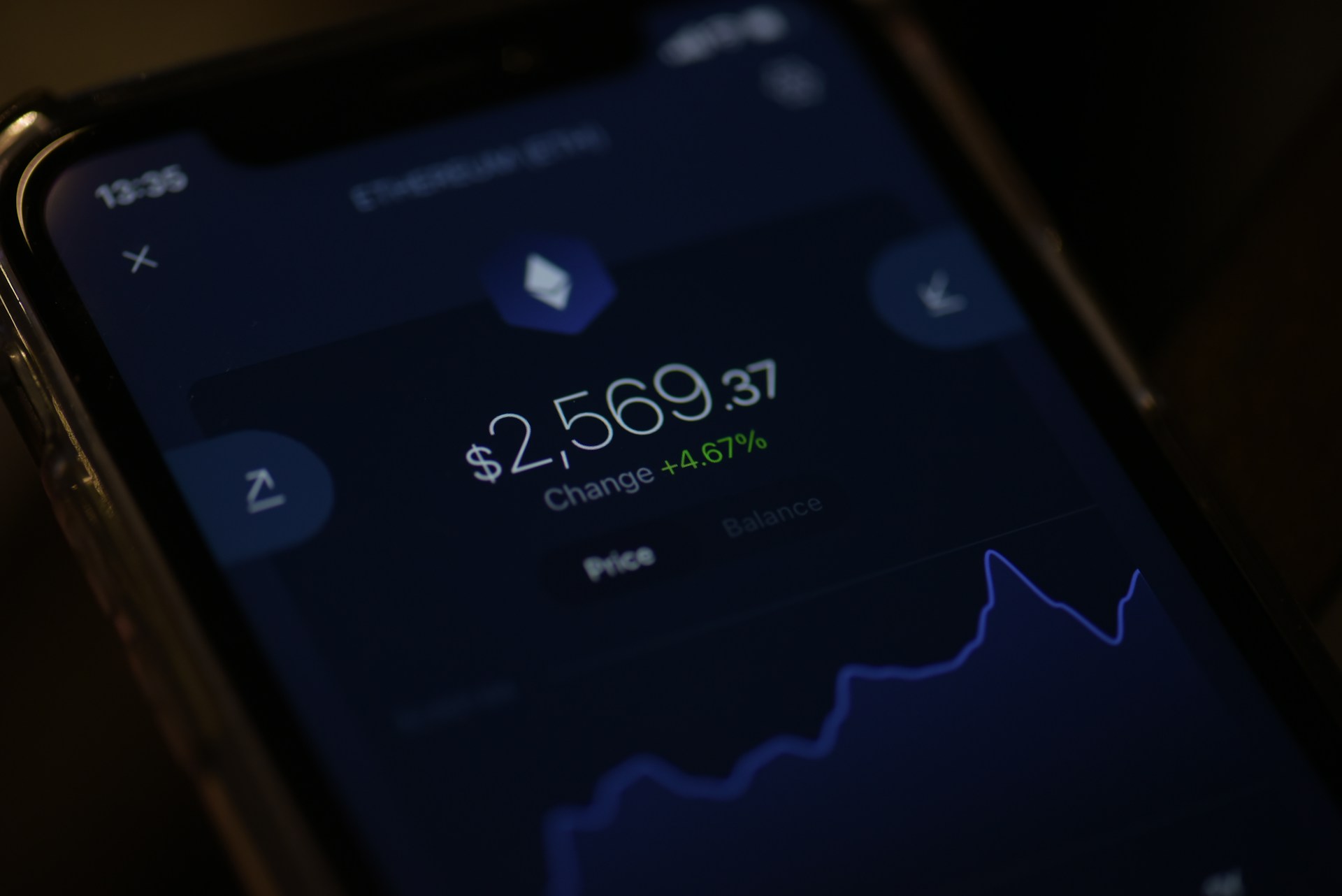

Leading cryptocurrency gaming company PeerGame has announced its exclusive integration with HandCash, which enables players to connect their crypto wallets and begin playing quickly and easily.
HandCash is a digital wallet designed for seamless management of Bitcoin Satoshi Vision (BSV) and other digital assets. It allows users to make quick, secure transactions, store tokens, and interact with decentralised applications, all through a user-friendly interface. The integration with the PeerGame platform means no lengthy sign-up process is needed, and players can immediately enjoy PeerGame’s wide range of games. By streamlining the process, the platform ensures a frictionless entry into the gaming world.
This innovative partnership emphasises PeerGame’s commitment to offering a smooth, user-centric experience that puts control in the hands of the player. This is an example of one of the easiest and fastest ways to start playing, enhancing both convenience and speed for all players. BSV Blockchain’s fast transactions and low fees play a key role in this, providing instant deposits and withdrawals that further improve the overall experience. Transactions are seamless, ensuring that players retain full control of their funds at all times while offering greater security and transparency.
Margie Dobrowolski, Project Lead at PeerGame, commented:
“This is an exciting new prospect for our clients as they will be able to instantly connect their wallets and begin playing, bypassing the traditional and lengthy account registration process. The unique wallet connection and integration with HandCash is exclusive to PeerGame, making it a standout feature within the iGaming industry. While other services may utilise the same connection, none integrate it within the gaming sector in the same way.”
For more information about PeerGame visit https://peergame.com/.
About PeerGame
PeerGame is a leading technology company that aims to revolutionise Casino 2.0, leveraging the power of Bitcoin SV to build a frictionless, fast and easy-to-use gaming platform.
-

 Crypto3 years ago
Crypto3 years agoCardalonia Aiming To Become The Biggest Metaverse Project On Cardano
-
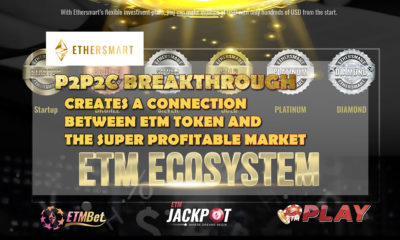
 Press Release4 years ago
Press Release4 years agoP2P2C BREAKTHROUGH CREATES A CONNECTION BETWEEN ETM TOKEN AND THE SUPER PROFITABLE MARKET
-
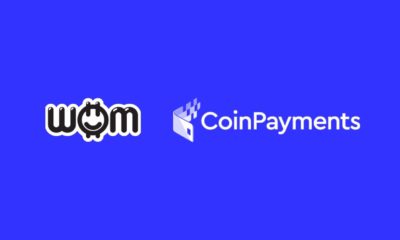
 Blockchain5 years ago
Blockchain5 years agoWOM Protocol partners with CoinPayments, the world’s largest cryptocurrency payments processor
-

 Press Release4 years ago
Press Release4 years agoETHERSMART DEVELOPER’S VISION MADE FINTECH COMPANY BECOME DUBAI’S TOP DIGITAL BANK
-
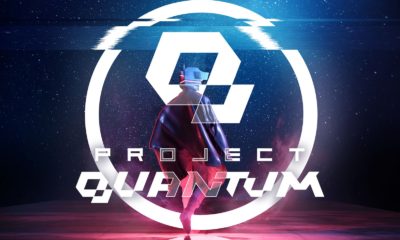
 Press Release4 years ago
Press Release4 years agoProject Quantum – Decentralised AAA Gaming
-

 Blockchain5 years ago
Blockchain5 years agoWOM Protocol Recommended by Premier Crypto Analyst as only full featured project for August
-

 Press Release4 years ago
Press Release4 years agoETHERSMART DEVELOPER’S VISION MADE FINTECH COMPANY BECOME DUBAI’S TOP DIGITAL BANK
-
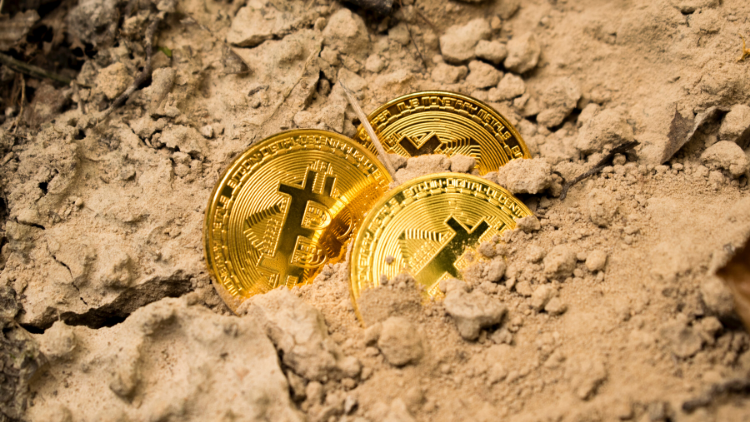
 Blockchain5 years ago
Blockchain5 years ago1.5 Times More Bitcoin is purchased by Grayscale Than Daily Mined Coins






